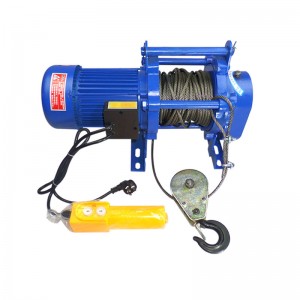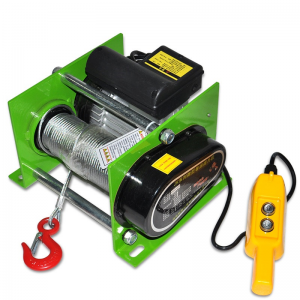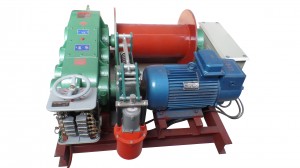Before work begins:
Every type of hoist requires a certain level of training. Before an operator is approved to operate any type of hoist, they should be properly trained and approved by their supervisor.
Part of hoist training is knowing the components of the hoist and its weight load capacity. Much of this information is part of the owner’s manual and what a manufacturer provided as guidelines. Since hoists have several key components that function together during operation, it is important that operators understand and have experience with each of the components.

It requires that warning labels be placed on any piece of equipment that can be considered a safety hazard. Reading warning labels and knowing the potential malfunctions and hazards of a hoist that may occur during operation is an essential and necessary part of hoist operation.
Prior to operation, emergency shut offs, kill switches, and other types of safety measures should be identified and located prior to hoist operation. Should malfunctions occur, it’s important tto know what to do to immediately cease operation to prevent accidents and who to notify.
Pre-work inspection:
Attached to every hoist is a checklist that must be completed prior to operation. Included in the checklist are features, aspects, and areas of the hoist that require inspection. Most checklists are dated in regard to the last time the hoist was activated and if there were any problems during operation.
Check the hook and cable or chain for nicks, gouges, cracks, twist, saddle wear, load-bearing point wear, and throat opening deformity. The chain or wire rope should be sufficiently lubricated prior to operation.
Wire rope should be inspected and examined for crushing, kinking, distortion, birdcaging, unstranding or strand displacement, broken or cut strands, and general corrosion.
Short and brief tests of the controls should be completed for proper functionality as well as examinations of wiring and connectors.
While operating the hoist:
Loads should be secured using a hook and sling or lifter. Care should be taken to ensure that the hoist is not overloaded. The hook and upper suspension should be in a straight line. The chain or body of the hoist should not come in contact with the load.
The area around and under the load should be clear of all personnel. For extremely heavy or awkward loads, warnings may be necessary to inform people in close proximity to the load.
All hoists have a published load capacity that must be strictly followed to ensure the safe performance of the hoist. Serious and dangerous outcomes can be the result of not adhering to hoist guidelines and weight limits.
Post time: Oct-21-2022






